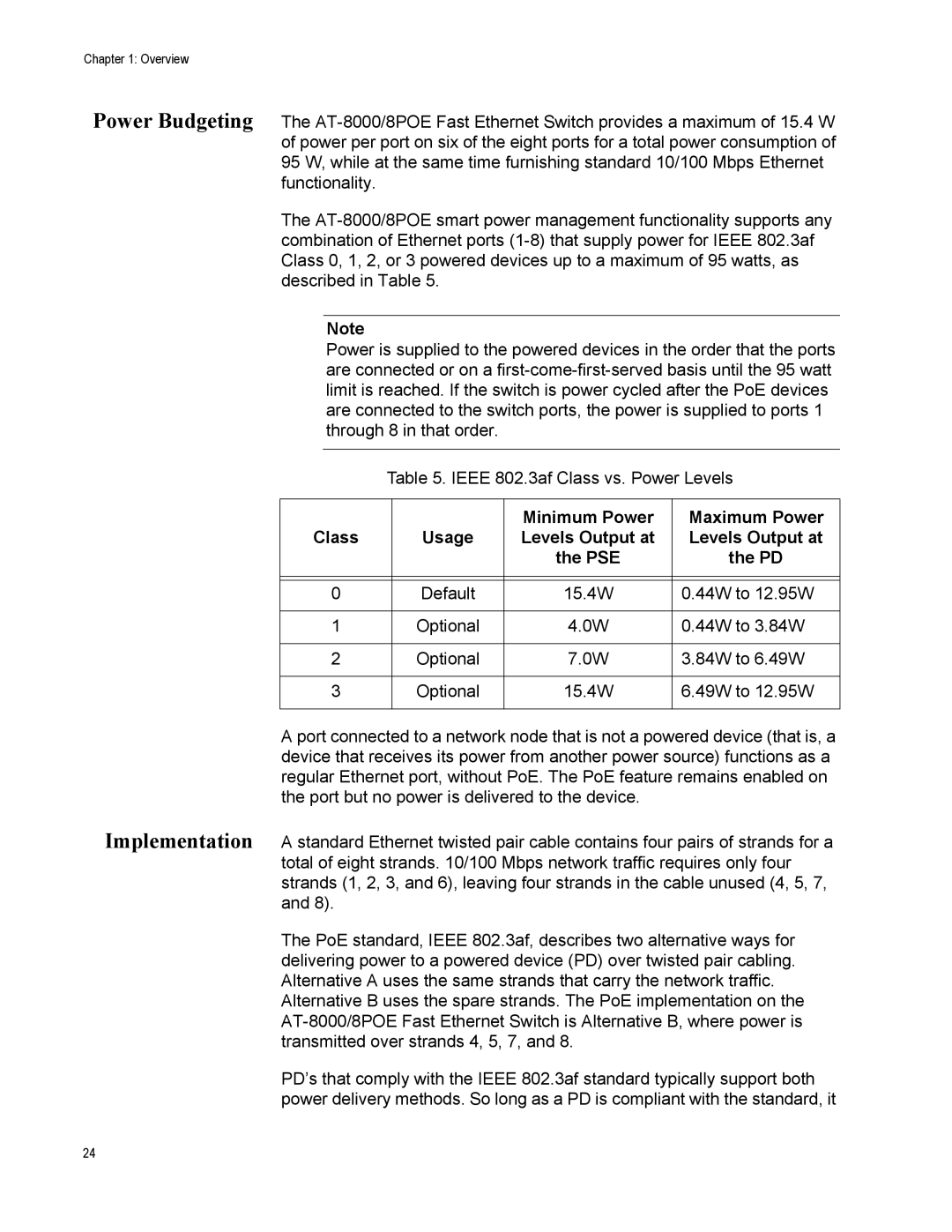
Chapter 1: Overview
Power Budgeting The
The
Note
Power is supplied to the powered devices in the order that the ports are connected or on a
Table 5. IEEE 802.3af Class vs. Power Levels
|
| Minimum Power | Maximum Power |
Class | Usage | Levels Output at | Levels Output at |
|
| the PSE | the PD |
|
|
|
|
|
|
|
|
0 | Default | 15.4W | 0.44W to 12.95W |
|
|
|
|
1 | Optional | 4.0W | 0.44W to 3.84W |
|
|
|
|
2 | Optional | 7.0W | 3.84W to 6.49W |
|
|
|
|
3 | Optional | 15.4W | 6.49W to 12.95W |
|
|
|
|
A port connected to a network node that is not a powered device (that is, a device that receives its power from another power source) functions as a regular Ethernet port, without PoE. The PoE feature remains enabled on the port but no power is delivered to the device.
Implementation A standard Ethernet twisted pair cable contains four pairs of strands for a total of eight strands. 10/100 Mbps network traffic requires only four strands (1, 2, 3, and 6), leaving four strands in the cable unused (4, 5, 7, and 8).
The PoE standard, IEEE 802.3af, describes two alternative ways for delivering power to a powered device (PD) over twisted pair cabling. Alternative A uses the same strands that carry the network traffic.
Alternative B uses the spare strands. The PoE implementation on the
PD’s that comply with the IEEE 802.3af standard typically support both power delivery methods. So long as a PD is compliant with the standard, it
24
